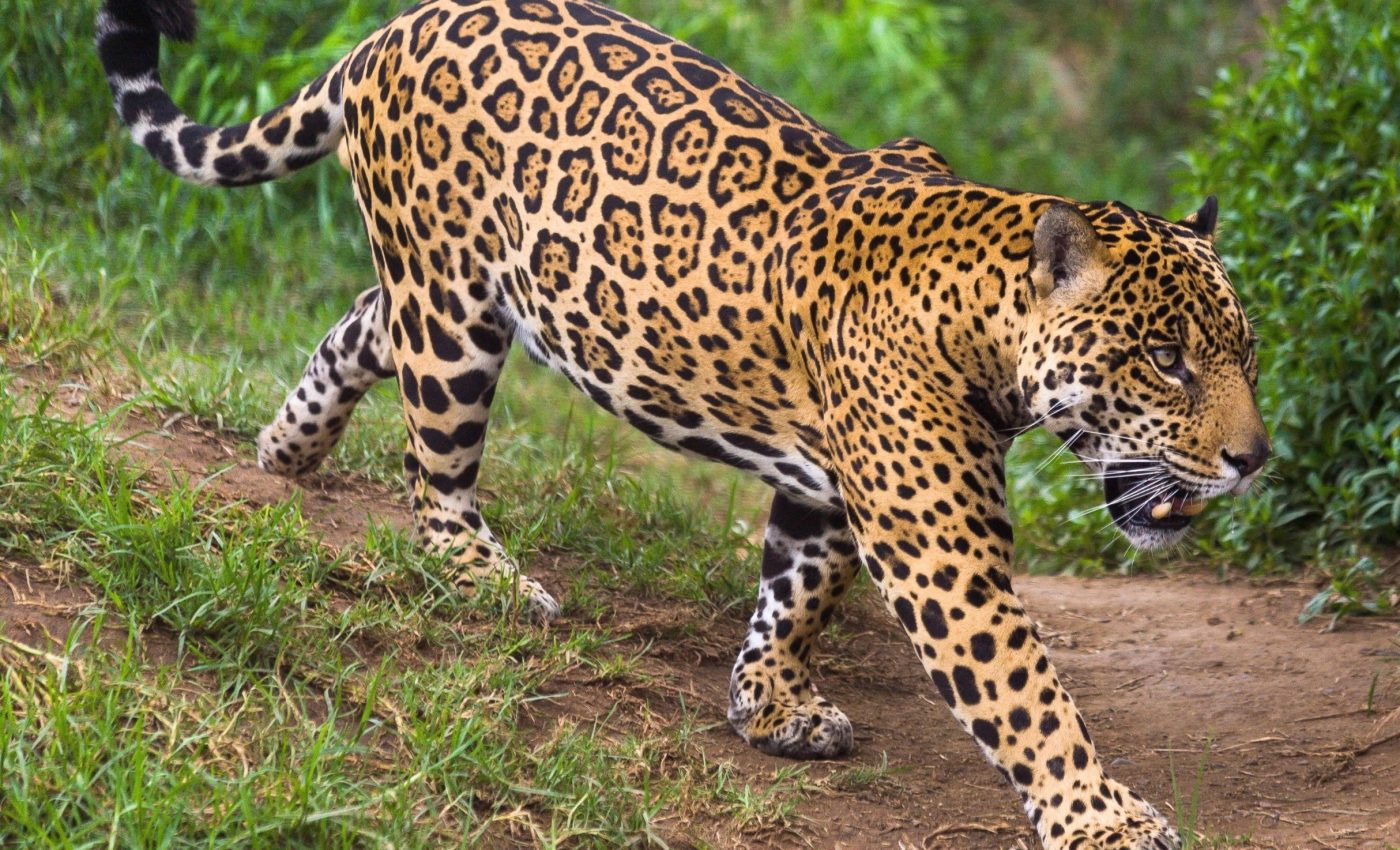
How four predators manage to coexist in one rainforest
In Guatemala’s Maya Biosphere Reserve, four wild cat species avoid competition by staking out different vertical tiers of the forest, from the ground-dwelling jaguar to the treetop-moving margay.
A new study led by Oregon State University shows that each species leans on a different “floor” of the rainforest, with some prowling the leaf litter and others targeting prey in the trees.
“This research challenges long-held assumptions about how large carnivores coexist without competitively excluding each other and highlights the importance of vertical foraging stratification,” said Ellen Dymit, a doctoral researcher at Oregon State University.
“As habitat loss and climate change reshape ecosystems, understanding how predators partition resources will be critical for conservation.”
One forest, four strategies
Jaguars, pumas, ocelots, and margays roam the same subtropical forests spanning Guatemala, Belize, and Mexico.
Classic niche theory argues that similar predators must divide resources by space, time, or diet. In dense tropical forests, there’s a fourth axis: height.
The team found a clear split – jaguars and ocelots focused on ground-dwelling prey, while pumas and margays drew a larger share of their meals from creatures that live in the canopy.
A surprising menu for pumas
The biggest shock was the puma’s preference list. DNA from scat samples showed Central American spider monkeys and black howler monkeys were the top contributors to puma diets, outweighing red and gray brocket deer and peccaries.
By contrast, monkeys were almost absent from jaguar and ocelot menus. The data even revealed intraguild predation: ocelots made up about a tenth of the jaguar diet and a small slice of the puma’s.
Capturing wild cats in the rainforest
To capture how and where cats move, researchers set 55 camera traps on the ground and 30 in the canopy (on average 12 meters up) at remote sites that sometimes required eight hours of ATV travel to reach.
The network logged 1,550 independent detections of jaguars, 1,482 of pumas, 1,378 of ocelots, and 188 of margays.
Margays, the most arboreal of the quartet, triggered 32 cameras in the canopy and 156 at ground level. Jaguars, pumas, and ocelots were recorded only on the ground, yet diet evidence still pointed to pumas exploiting tree-dwelling prey.
What the scat revealed
Field teams and two trained detection dogs, Barley and Niffler, collected 215 scat samples across the landscape.
Back in Taal Levi’s lab at Oregon State, the team used DNA metabarcoding to reconstruct meals. Jaguars were heavy on peccaries and nine-banded armadillos, with some brown brocket deer and occasional ocelots.
Pumas skewed toward monkeys, then brocket deer, peccaries, and lowland pacas. Ocelots leaned into small to medium mammals, especially opossums and Gaumer’s spiky pocket mouse, while margays targeted mice, small arboreal opossums, larger opossums, and rats.
Prey breadth varied: at least 20 species for jaguars, 27 for pumas, 25 for ocelots, and seven for margays.
How do pumas catch monkeys?
The team never filmed a puma in the trees during this study, yet their fecal DNA says arboreal prey is common. One possibility is opportunism on the ground when monkeys come down to forage or drink.
But monkeys were rarely seen at water holes, and their high dietary frequency in pumas hints at another tactic: ambush in the lower canopy or on leaning trunks and lianas. Pumas are lighter than jaguars, which may help them navigate steeper, more precarious angles.
Meanwhile, the jaguar’s extraordinary bite force likely explains its fondness for hard-shelled armadillos, a type of prey that demands crushing power more than aerial agility.
Activity patterns from camera traps showed pumas and jaguars using similar times and places on the landscape, as did ocelots and margays.
Instead of avoiding each other by time of day, the cats appear to minimize direct competition by separating along the vertical axis and by prey type, a strategy that may be more attainable in multistory rainforests than in open savannas.
Conservation in three dimensions
Vertical partitioning is more than a clever ecological trick. It’s a management flag. If cats divide the forest by height, then logging of mid-story and canopy layers, overhunting of arboreal mammals, or droughts that alter tree structure can undercut coexistence.
The findings suggest that protecting prey communities across ground, understory, and canopy is essential, as is maintaining the structural complexity that allows cats to specialize without clashing.
The study’s success leans on long-running conservation programs by WCS Guatemala in the Maya Biosphere Reserve, where their teams installed canopy cameras while pursuing other projects, including safeguarding Central American scarlet macaws.
Oregon State University coordinated the genetic sleuthing, complementing video with diet reconstructions to turn scattered clues into a cohesive picture of resource partitioning.
Protecting cats in the rainforest
As forests warm, dry, and fragment, the delicate balance that keeps big predators from displacing one another can fray.
If arboreal prey declines, pumas might be forced groundward into more direct competition with jaguars. If ground prey is overharvested, jaguars could push harder on ocelots.
By documenting how height, prey, and body mechanics interact, this work offers a practical roadmap for keeping all four species in the game.
Keep the rainforest intact in all dimensions, and you uphold the invisible agreement that allows jaguars, pumas, ocelots, and margays to live together without conflict.
The study is published in the Journal of Animal Ecology.
—–
Like what you read? Subscribe to our newsletter for engaging articles, exclusive content, and the latest updates.
Check us out on EarthSnap, a free app brought to you by Eric Ralls and Earth.com.
—–













